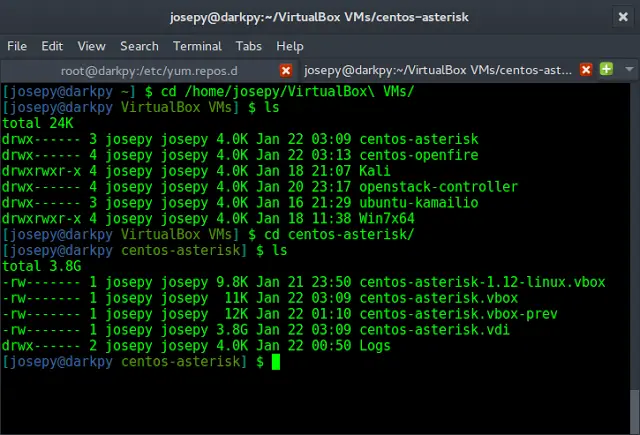Prerequisites: Deep Q-Learning This article will demonstrate how to do reinforcement learning on a larger environment than previously demonstrated. We will be implementing Deep Q-Learning technique using Tensorflow.
Note: A graphics rendering library is required for the following demonstration. For Windows operating system, PyOpenGl is suggested while for Ubuntu operating system, OpenGl is recommended.
Deep Q-Learning (DQL) is a type of reinforcement learning algorithm that uses deep neural networks to approximate the Q-function, which represents the expected cumulative reward of an agent taking a specific action in a specific state. TensorFlow is an open-source machine learning library that can be used to implement DQL.
Here’s a general outline of how to implement DQL using TensorFlow:
Define the Q-network: The Q-network is a deep neural network that takes in the current state of the agent and outputs the Q-values for each possible action. The Q-network can be defined using TensorFlow’s Keras API.
Initialize the Q-network’s parameters: The Q-network’s parameters can be initialized using TensorFlow’s variable initializers.
Define the loss function: The loss function is used to update the Q-network’s parameters. The loss function is typically defined as the mean squared error between the Q-network’s predicted Q-values and the target Q-values.
Define the optimizer: The optimizer is used to minimize the loss function and update the Q-network’s parameters. TensorFlow provides a wide range of optimizers, such as Adam, RMSprop, etc.
Collect experience: The agent interacts with the environment and collects experience in the form of (state, action, reward, next_state)
Step 1: Importing the required libraries
Python3
import numpy as npimport gymfrom keras.models import Sequentialfrom keras.layers import Dense, Activation, Flattenfrom keras.optimizers import Adamfrom rl.agents.dqn import DQNAgentfrom rl.policy import EpsGreedyQPolicyfrom rl.memory import SequentialMemory |
Step 2: Building the Environment Note: A preloaded environment will be used from OpenAI’s gym module which contains many different environments for different purposes. The list of environments can be viewed from their website. Here, the ‘MountainCar-v0’ environment will be used. In this, a car(the agent) is stuck between two mountains and has to drive uphill on one of them. The car’s engine is not strong enough to drive up on it’s own and thus the car has to build momentum to get uphill
Python3
# Building the environmentenvironment_name = 'MountainCar-v0'env = gym.make(environment_name)np.random.seed(0)env.seed(0)# Extracting the number of possible actionsnum_actions = env.action_space.n |
Step 3: Building the learning agent The learning agent will be built using a deep neural network and for the same purpose, we will be using the Sequential class of the Keras module.
Python3
agent = Sequential()agent.add(Flatten(input_shape =(1, ) + env.observation_space.shape))agent.add(Dense(16))agent.add(Activation('relu'))agent.add(Dense(num_actions))agent.add(Activation('linear')) |
Step 4: Finding the Optimal Strategy
Python3
# Building the model to find the optimal strategystrategy = EpsGreedyQPolicy()memory = SequentialMemory(limit = 10000, window_length = 1)dqn = DQNAgent(model = agent, nb_actions = num_actions, memory = memory, nb_steps_warmup = 10,target_model_update = 1e-2, policy = strategy)dqn.compile(Adam(lr = 1e-3), metrics =['mae'])# Visualizing the training dqn.fit(env, nb_steps = 5000, visualize = True, verbose = 2) |
The agent tries different methods to reach the top and thus gaining knowledge from each episode. Step 5: Testing the Learning Agent
Python3
# Testing the learning agentdqn.test(env, nb_episodes = 5, visualize = True) |
References:
There are several books available on the topic of Deep Q-Learning and its implementation using TensorFlow. Here are a few popular ones:
“Reinforcement Learning with TensorFlow” by G. Wayne Powell: This book provides a comprehensive introduction to reinforcement learning and its implementation using TensorFlow. It covers various algorithms such as Q-learning, SARSA, and DDPG, and provides code examples for implementing them using TensorFlow.
“Hands-On Reinforcement Learning with TensorFlow 2.0” by Sudharsan Ravichandiran: This book provides a hands-on approach to learning reinforcement learning and its implementation using TensorFlow 2.0. It covers various algorithms such as Q-learning, SARSA, and DDPG, and provides code examples for implementing them using TensorFlow 2.0.
“Deep Reinforcement Learning Hands-On” by Maxim Lapan: This book provides a hands-on approach to learning deep reinforcement learning and its implementation using TensorFlow. It covers various deep reinforcement learning algorithms such as DQN, DDQN, A3C, and PPO, and provides code examples for implementing them using TensorFlow.
“Deep Reinforcement Learning in Action” by Christian S. Perone: This book provides a hands-on approach to learning deep reinforcement learning and its implementation using TensorFlow and Keras. It covers various deep reinforcement learning algorithms such as DQN, DDQN, A3C, and PPO, and provides code examples for implementing them using TensorFlow and Keras.
The agent tries to apply it’s knowledge to reach the top.




